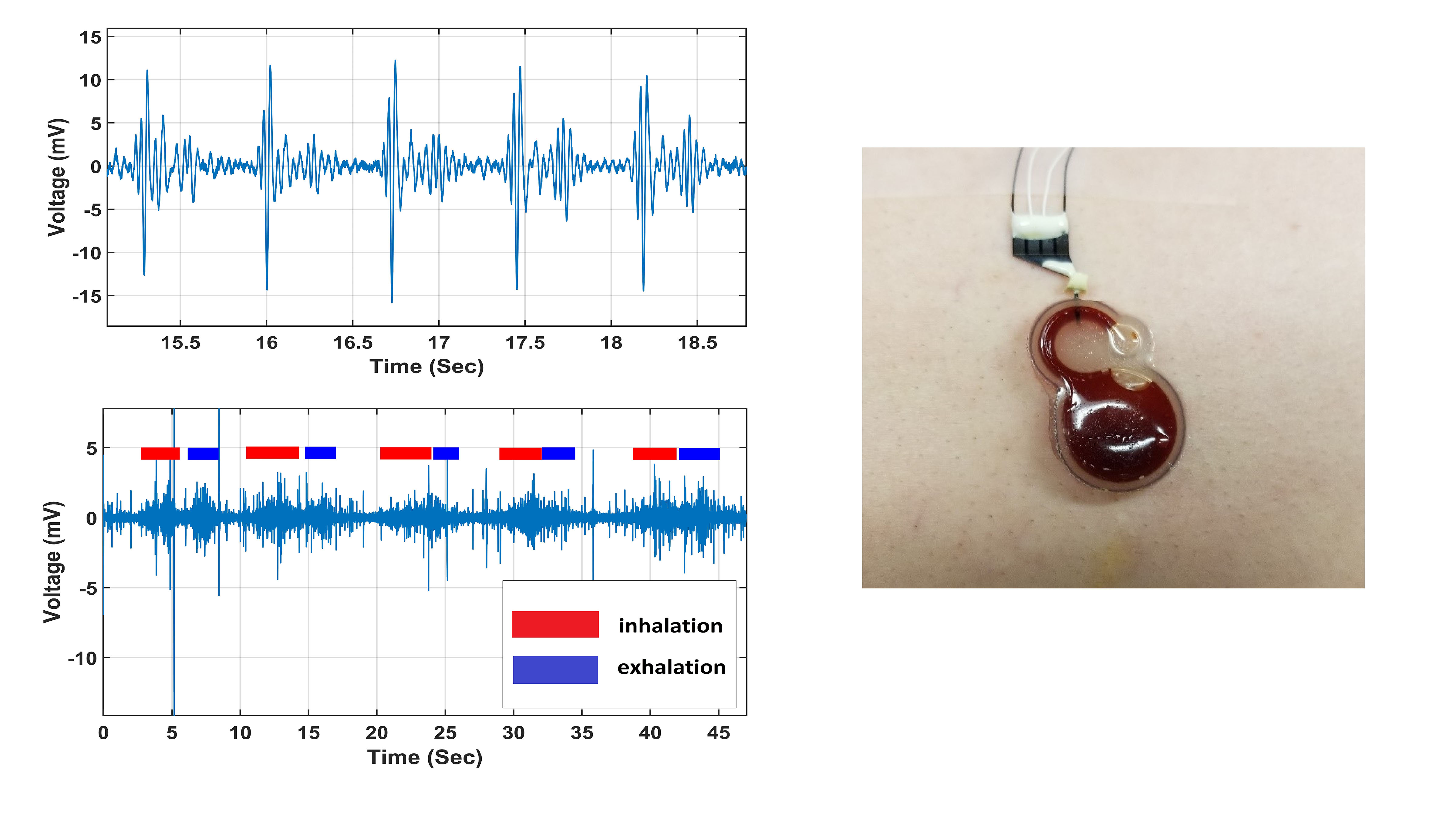The small and inexpensive sensor, announced in Applied Physics Letters, by AIP Publishing, is based on an electrochemical system involving two ionic forms of iodine, I– and I3–. A solution containing these electrolyte substances is placed into a small circular cavity that is capped with a thin flexible diaphragm, allowing detection of subtle movements when placed on a patient’s chest.
Small motions that arise from the heartbeat and breathing cause the flexible diaphragm to move the I–/I3– solution into a narrow channel in the device, where it is electrochemically detected by four platinum electrodes.
“The sensor body was fabricated using Ecoflex 00-20, which has proven to be a very soft, strong and stretchy silicone rubber that is widely used in medical simulation, orthotics, and prosthetics,” said author Yong Xu.
The investigators created a mold for the circular chamber and the associated narrow channel using 3D printing. A solution to create Ecoflex 00-20 was poured into the mold to form the body of the sensor and was also spin-coated on a rapidly rotating disk to produce the thin diaphragm. After the diaphragm and chamber body were bonded together, the investigators used a syringe to fill the chamber with the electrolyte solution.
The resulting device is only 28 millimeters wide and is skin-safe, so it can be attached directly to the patient’s body. The device was able to detect the heartbeat with high sensitivity. A signal-to-noise ratio of greater than 6:1 was achieved, which is considered good.
Respiration can be detected by this device in two different ways. Because of the sensor’s stretchability, it deforms when the chest contracts and expands during breathing, functioning as a strain sensor. The other way the sensor detects respiration is due to the way the volume of the chest cavity changes during a breath, modulating the heartbeat signal. In this way, respiration is detected indirectly through changes in the heartbeat.
The authors suggest their sensor could potentially be used for diagnosis of respiratory diseases, such as COVID-19, which often leads to shortness of breath.
“Symptoms in the early stage of infection could be subtle,” said Xu. “Wearable devices that are capable of accurate detection of subtle respiratory and cardiovascular variation are of great interest especially during the current pandemic.”
###
The article, “A wearable mechano-acoustic sensor based on electrochemical redox reaction for continuous cardiorespiratory monitoring,” is authored by Zhiguo Zhao, Xiaoce Feng, Xiaoyu Chen, Lenore L. Dai, and Yong Xu. The article will appear in Applied Physics Letters on Jan. 12, 2021 (DOI: 10.1063/5.0029108). After that date, it can be accessed at https://aip.scitation.org/doi/10.1063/5.0029108.
ABOUT THE JOURNAL
Applied Physics Letters features rapid reports on significant discoveries in applied physics. The journal covers new experimental and theoretical research on applications of physics phenomena related to all branches of science, engineering, and modern technology. See https://aip.scitation.org/journal/apl.
###


